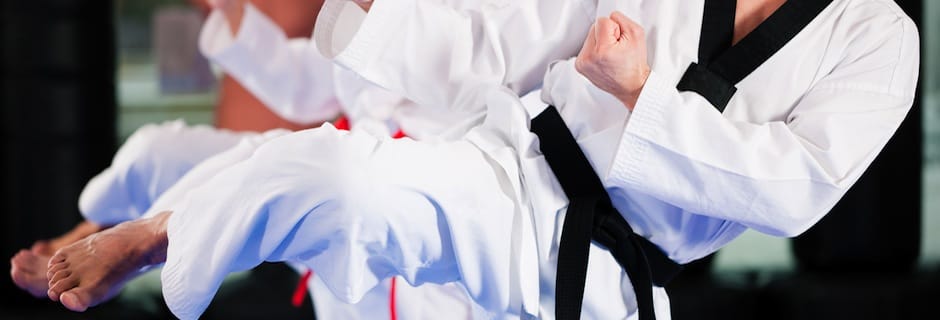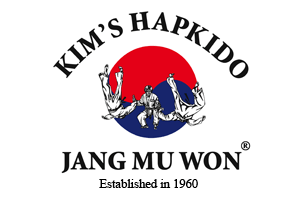MARTIAL ART STYLES
 There are literally thousands of martial art styles spread throughout the world and each style has its own unique methods, techniques, and philosophies. However, despite some distinctions between styles, it is surprising to note how often there are deep similarities. The analogy has been made comparing martial arts to a tree with many different branches but all sharing common roots. Historical, Cultural, and Socio-Political events within and between different countries has had a profound effect on the development and spread of martial arts. Brilliant innovators throughout time have been instrumental in combining, adapting, modifying, and creating new styles as circumstances warranted. We have listed a handful of some of the commonly practiced styles with a brief synopsis of each.
There are literally thousands of martial art styles spread throughout the world and each style has its own unique methods, techniques, and philosophies. However, despite some distinctions between styles, it is surprising to note how often there are deep similarities. The analogy has been made comparing martial arts to a tree with many different branches but all sharing common roots. Historical, Cultural, and Socio-Political events within and between different countries has had a profound effect on the development and spread of martial arts. Brilliant innovators throughout time have been instrumental in combining, adapting, modifying, and creating new styles as circumstances warranted. We have listed a handful of some of the commonly practiced styles with a brief synopsis of each.
Hapkido: ("The Way of Harmonizing and Coordinating Energy")
This martial arts style is an eclectic Korean style of fighting and self-defense that includes movements like joint locks and joint manipulations, kicks, punches and pressure point attacks. It contains both long and short-range defensive and offensive movements and utilizes jumping kicks and other striking attacks such as the use of knees and elbows. Hapkido emphasizes control of the opponent through circular motion, non-resisting movements, and by conforming to the angle and energy of an attack and redirecting it. Weapons such as the sword, cane, short and middle length stick, staff, cane, and even rope, are part of the Hapkido arsenal.
Hapkido incorporates three guiding principles: The Circle Principle, The Harmony Principle and The Water Principle. The Circle Principle reflects a way to gain momentum by moving in a natural manner to redirect attacks from an opponent. The Harmony Principle is one of non-resistance, and teaches practitioners to not try to muscle their way through defense or use direct force. Finally, the Water Principle reflects the soft, adaptable strength of water that reminds defenders to not rely on physical force alone but to flow with, over, or under an attack finding the point of least resistance.
Karate: ("The Way of the Open Hand")
Karate was developed in the Ryukyu Islands, or what is now Okinawa, Japan. It was an innovation that grew out of contact with both Southern and Northern styles of "Kung-Fu" from China. The Okinawan defensive arts consisted of both hard and soft styles and ultimately these approaches were combined into what became known generically as Karate. In the early 20th Century this martial arts style was brought to the mainland of Japan, where it was widely taught in universities and to the military.
Karate is known as a striking art, focusing on kicking, punching, elbow and knee strikes, as well as open handed techniques like knife-hands, spear-hands and palm-heel strikes. Generally, Karate is also known as a hard and fast style consisting of predominantly linear movement and devastating attacks. Even the defensive blocking techniques are designed to crush an attack. Weapons training is also standard in most karate styles.
Taekwondo: ("The Way of Striking with the Hands and Feet")
This Korean martial art is a combat based art that in modern times has also found expression as a general method of exercise and a sport. Tae Kwon Do consists of a wide array of punches, kicks, sweeps, throws, and joint locks. The so called Sport Tae Kwon Do of modern times has a self-defense focus as well as a tournament/competition emphasis and is practiced by the general public. The version of Tae Kwon Do as practiced by the military in South Korea and other countries is definitely combat focused and extremely lethal.
Taekwondo also utilizes forms-practice for training in which the patterns and names of the fighting patterns reflect elements of Korean history, culture and philosophy. They are meant to help the martial artist visualize, embody and express the spirit of what each form is meant to cultivate within the practitioner. Tae Kwon Do incorporates dynamic linear movement and fluid circular movements.
Judo: ("The Way of Flexibility")
This modern martial art and combat sport originated in Japan in 1882. It was strongly influenced by more ancient Japanese defensive arts that had preceded it. The main methodology of this style is to take down an opponent to the ground, subdue them with a pin, or force them to submit with a joint lock or a choke hold. While strikes, and kicks are a part of the art, they only are utilized in pre-arranged training forms, and are not allowed in modern day competition.
Judo techniques are typically divided into three categories- throwing techniques, grappling techniques and striking techniques. Judo, Jiu-Jitsu, and other Japanese fighting styles that surfaced throughout the rest of the 20th century have much in common due to their common heritage rooted in the philosophy and practices of Budo, Bushido, and Zen Buddhism.
Tai Chi Chuan: ("Supreme Ultimate Fist." or, "Boundless Fist")
This style is Chinese in origin, but has become popular in the United States as a health and longevity training technique and exercise, though its original roots were as a formidable self- defense art with substantial health benefits. A wide array of training methods exist such as the use of pre-set patterns or forms, 2 person drills known as push hands, and even weapons training. This practice evolved alongside the Chinese philosophies of Taoism, Confucianism and Buddhism. As such, the five major styles of Tai Chi Chuan taught today strive to foster greater health and longevity within their adherents, strengthen a sense of community, and seek for mental, physical, and spiritual balance and harmony.
The movements of Tai Chi are based on harmony between the upper and the lower, the inner and the outer, meaning that the practitioner seeks to combine body movement with their intention and focus and the unimpeded flow of Chi. This state of physical and mental relaxation combined with fluid movement can neutralize an attack through leverage and redirecting the angle and energy from an aggressor's attack.
Tai Chi has been described as "moving meditation" for the mental clarity and serenity that it develops. The mental imagery associated with the name for each individual movement innate within the forms practice increases the amount and flow of Chi within the body and contributes to the overall health of the individual.
